How to Build a Low-Maintenance Pond
Updated: Jul. 28, 2023
A little more building work means a LOT less maintenance and repair.
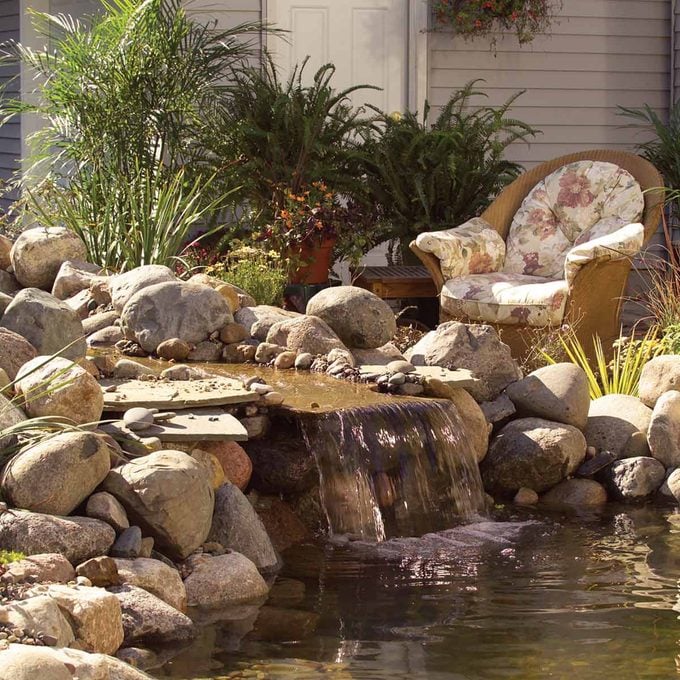
On This Page
Overview
A DIY pond can become the best feature in your backyard, your favorite hangout, a project you’ll be proud of for years. But if you don’t plan for the maintenance up front, many ponds become just another source of chores and frustration. So we asked professional backyard pond builders and longtime pond owners for their best advice on avoiding problems and maintenance. Before you grab your shovel or buy a bucket of goldfish, check out what they had to say about building a small garden pond.
If you need more information on building a pond, check out this article from a past Family Handyman issue.
Required Tools for this Backyard Pond
- 4-in-1 screwdriver
- Bucket
- Level
- Spade
- Utility knife
- Wheelbarrow
Required Materials for this Backyard Pond
- Band clamps
- Corrugated tubing
- EPDM liner
- Fieldstone
- Pond foam
- Pond pump
- Rocks
- Sand
- Threaded tee and fittings
- Underlayment
Choose a Tough Liner
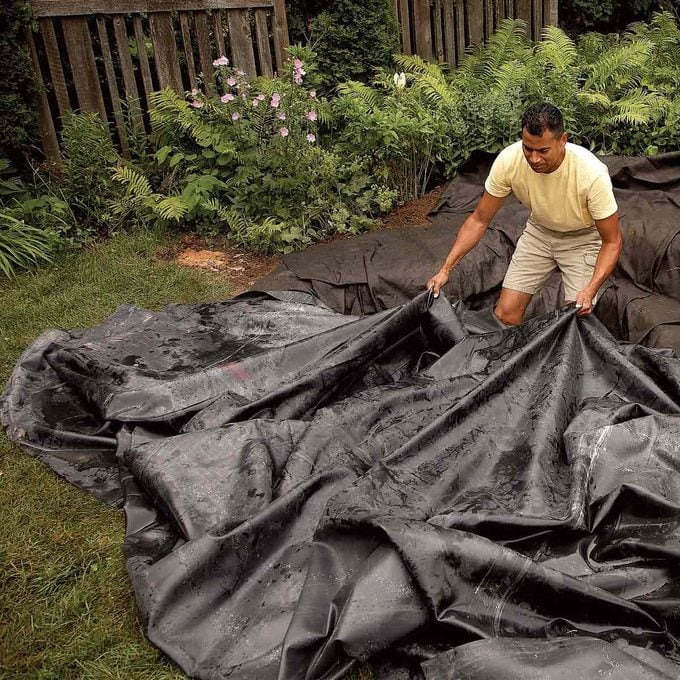
A leaking liner is one of the most common complaints of backyard pond owners. Patching a leak is no big deal, but finding it can be a hole another story. So a durable liner is a good investment. Most experts recommend 45-mil-thick EPDM rubber pond liners.
If you’re having trouble finding a good liner, we recommend this Total Pond EPDM liner from Home Depot.
Tips and Lessons for Building a Small Garden Pond From Our Field Editors: Jim Boyle, Houston, TX
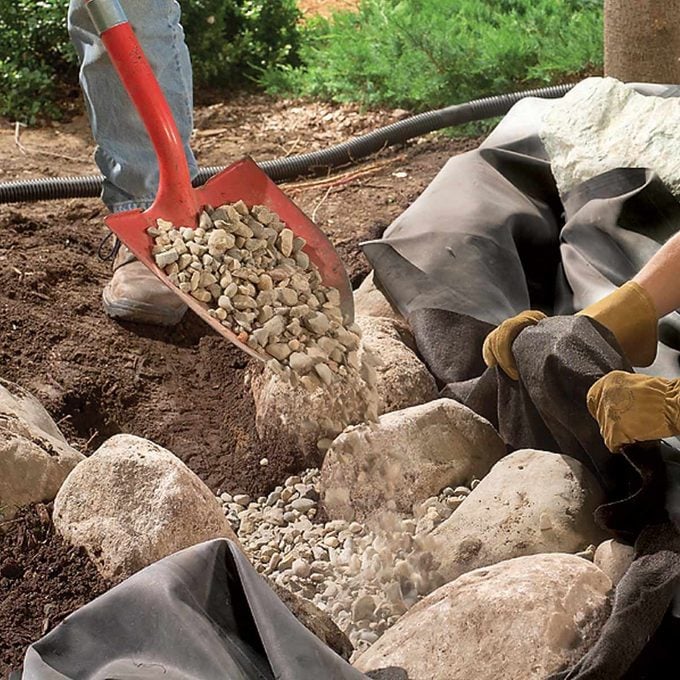
Best tip:
The soil in my area is thick “gumbo” that sticks to the shovel like peanut butter. So when I dug my DIY pond hole, I took a tip from some local excavators: I continuously dipped the shovel in a bucket of water and the sticky soil slipped right off.
Lesson learned the hard way:
I have a 10-year-old DIY pond liner that’s in good shape—except for one area that’s cracking beyond repair. My mistake was leaving that section of the liner exposed to direct sunlight. Some liner materials—like EPDM—stand up to the sun better than others, but none are completely immune to UV light damage. The underwater part of the liner doesn’t have to be shaded, but protect the rest with stones, gravel or plants.
Protect the Liner
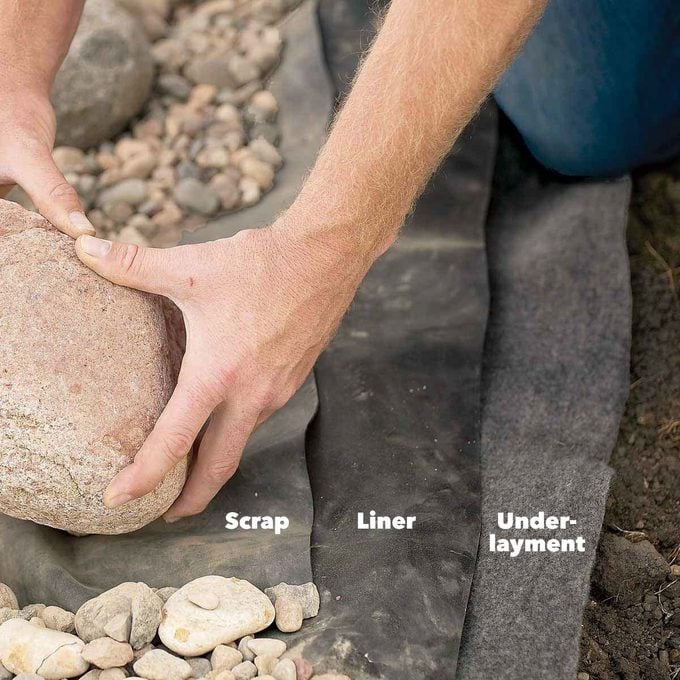
Even the toughest liner won’t stand up to sharp stones or roots. So when you’re done digging the pond hole, take a few minutes to pick out stones and cut back any exposed tree roots. Before you install the liner into the pond, cushion the hole with underlayment, a spongy synthetic fabric that helps protect against stones and growing roots.
Pump and Plumbing Tips
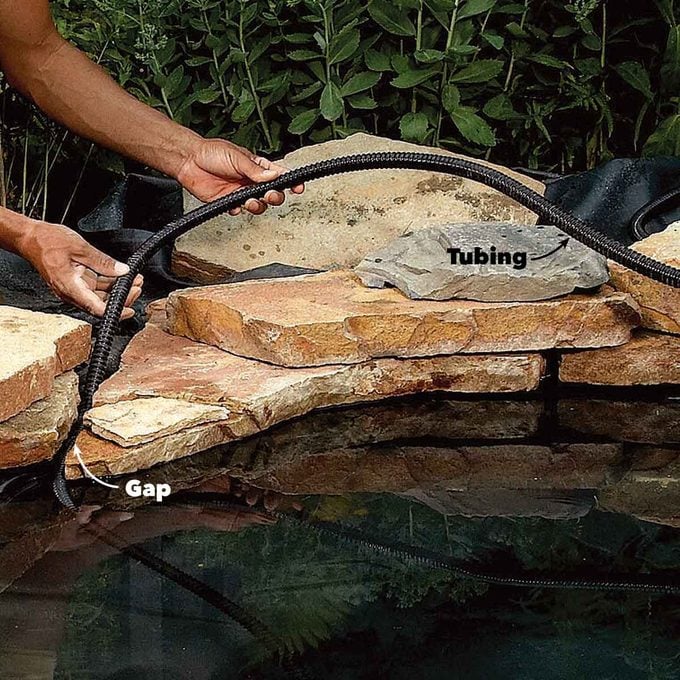
If your DIY pond will include a fountain or waterfall, you’ll need a pump and tubing to move water.
- Don’t set the pump directly on the pond floor where it will suck up damaging sludge. Elevate it on a brick or stone.
- For good water circulation, place the pump as far as possible from the waterfall or other inflow point. “Dead zones” where water stagnates are bad for fish and good for algae.
- Even if your pump has a built-in flow adjustment dial, install a valve in the tubing for more convenient adjustment.
Leave a gap between stones and make sure the tubing can slide through. Do the same for the pump’s power cord so you can remove or replace the pump without moving stones.
Tips and Lessons From Our Field Editors: Ken Werner, Hamilton, NY
Best tip:
Filling my 6,000-gallon pond would have run my well dry, and the local pool service wanted $400 to fill it. So I bought 100 ft. of plastic corrugated tubing ($50) and connected it to my downspouts. That filled my pond with rainwater in about two weeks.
Lesson learned the hard way:
Water attracts wildlife. That’s sometimes good, sometimes bad. Our worst visitor was a heron that poked holes in the liner while trying to catch goldfish with its beak. We found that the best critter deterrent for a small garden pond is a sprinkler controlled by a motion sensor (the Contech Scarecrow is one brand).
Keep Runoff Water Out
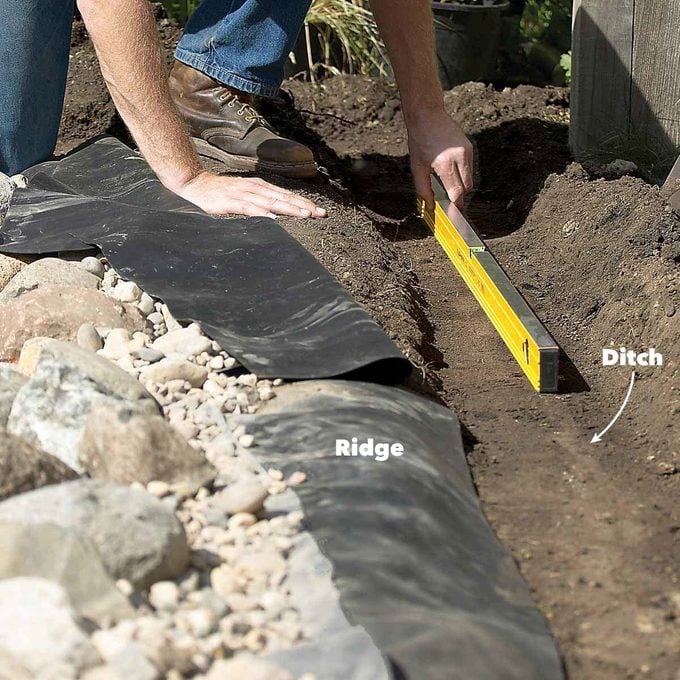
Build up a ridge—about 3 in. high—around your pond. If there’s an uphill slope next to the pond, dig a shallow ditch to channel water away.
Rainwater can carry soil, grass clippings and lawn chemicals into your pond. That means sludge buildup, algae growth, maybe even dead fish or pond plants. Keeping runoff out of pond water requires just a little extra care while you dig the pond hole: Make sure the rim of the hole is about 3 in. above the surrounding soil. If you’re building in a low spot that becomes a swamp during heavy rains, make the rim a bit higher.
Make it Easy to Empty
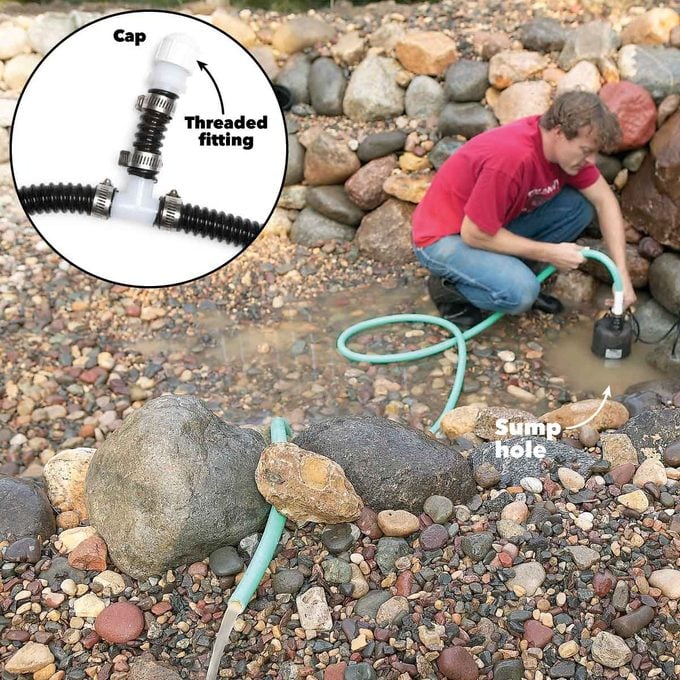
To prepare for winter or to clean the pond, most pond owners occasionally empty the pond using the pond pump. A sump hole makes that easier. But don’t place the pump in the hole during normal operation—the hole will be a gathering spot for debris that can damage the pump. If your pond will include a waterfall, install a tee (see inset above) in the tubing behind the waterfall. That lets you empty the pond without disconnecting the tubing at the waterfall.
Tips and Lessons From Our Field Editors: Mark Ripplinger Deltona, FL
Best tip:
When I ran the wiring to power my pond pump, I installed a switch by the back porch. We just flip the switch, sit back and enjoy the sound.
Lesson learned the hard way:
The first waterfall I built lost a lot of water because it trickled back between the stones just below the waterfall ledge. Take some extra time to carefully seal the stones behind and below the ledge. You can use mortar or “pond foam,” black expanding foam sealant that’s less visible than the yellowish stuff.
Use Tough Tubing
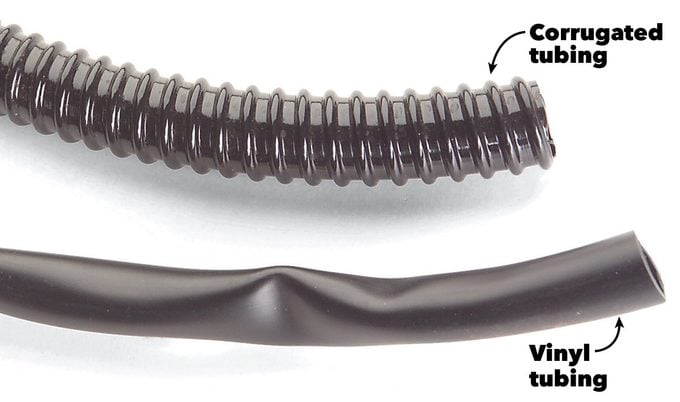
Beefy corrugated tubing won’t get kinked or crushed in your backyard pond and is well worth the extra few bucks you’ll pay for it.
If you need more information on building a pond, check out this article from a past Family Handyman issue.
